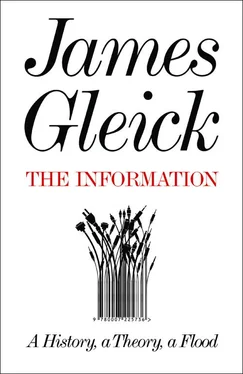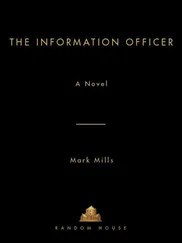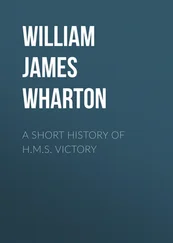Later, it was Michael Faraday in England who did more than anyone to turn electricity from magic to science, but even so, in 1854, when Faraday was at the height of his investigations, Dionysius Lardner, the scientific writer who so admired Babbage, could quite accurately declare, “The World of Science is not agreed as to the physical character of Electricity.” Some believed it to be a fluid “lighter and more subtle” than any gas; others suspected a compound of two fluids “having antagonistic properties”; and still others thought electricity was not a fluid at all, but something analogous to sound: “a series of undulations or vibrations.” Harper’s Magazine warned that “current” was just a metaphor and added mysteriously, “We are not to conceive of the electricity as carrying the message that we write, but rather as enabling the operator at the other end of the line to write a similar one.”
Whatever its nature, electricity was appreciated as a natural force placed under human control. A young New York newspaper, The Times , explained it by way of contrast with steam:
Both of them are powerful and even formidable agents wrested from nature, by the skill and power of man. But electricity is by far the subtlest energy of the two. It is an original natural element, while steam is an artificial production. . . . Electricity combined with magnetism, is a more subjective agent, and when evolved for transmission is ready to go forth, a safe and expeditious messenger to the ends of the habitable globe.
Looking back, rhapsodists found the modern age foretold in a verse from the book of Job: “Canst thou send lightnings, that they may go and say unto thee, Here we are?”
But lightning did not say anything—it dazzled, cracked, and burned, but to convey a message would require some ingenuity. In human hands, electricity could hardly accomplish anything, at first. It could not make a light brighter than a spark. It was silent. But it could be sent along wires to great distances—this was discovered early—and it seemed to turn wires into faint magnets. Those wires could be long: no one had found any limit to the range of the electric current. It took no time at all to see what this meant for the ancient dream of long-distance communication. It meant sympathetic needles.
Practical problems had to be solved: making wires, insulating them, storing currents, measuring them. A whole realm of engineering had to be invented. Apart from the engineering was a separate problem: the problem of the message itself. This was more a logic puzzle than a technical one. It was a problem of crossing levels, from kinetics to meaning. What form would the message take? How would the telegraph convert this fluid into words? By virtue of magnetism, the influence propagated across a distance could perform work upon physical objects, such as needles, or iron filings, or even small levers. People had different ideas: the electromagnet might sound an alarum-bell; might govern the motion of wheel-work; might turn a handle, which might carry a pencil (but nineteenth-century engineering was not up to robotic handwriting). Or the current might discharge a cannon. Imagine discharging a cannon by sending a signal from miles away! Would-be inventors naturally looked to previous communications technologies, but the precedents were mostly the wrong sort.
Before there were electric telegraphs, there were just telegraphs: les télégraphes , invented and named by Claude Chappe in France during the Revolution. 1 They were optical; a “telegraph” was a tower for sending signals to other towers in line of sight. The task was to devise a signaling system more efficient and flexible than, say, bonfires. Working with his messaging partner, his brother Ignace, Claude tried out a series of different schemes, evolving over a period of years.
The first was peculiar and ingenious. The Chappe brothers set a pair of pendulum clocks to beat in synchrony, each with its pointer turning around a dial at relatively high speed. They experimented with this in their hometown, Brûlon, about one hundred miles west of Paris. Ignace, the sender, would wait till the pointer reached an agreed number and at that instant signal by ringing a bell or firing a gun or, more often, banging upon a casserole . Upon hearing the sound, Claude, stationed a quarter mile away, would read the appropriate number off his own clock. He could convert number to words by looking them up in a prearranged list. This notion of communication via synchronized clocks reappeared in the twentieth century, in physicists’ thought experiments and in electronic devices, but in 1791 it led nowhere. One drawback was that the two stations had to be linked both by sight and by sound—and if they were, the clocks had little to add. Another was the problem of getting the clocks synchronized in the first place and keeping them synchronized. Ultimately, fast long-distance messaging was what made synchronization possible—not the reverse. The scheme collapsed under the weight of its own cleverness.
Meanwhile the Chappes managed to draw more of their brothers, Pierre and René, into the project, with a corps of municipal officers and royal notaries to bear witness. The next attempt dispensed with clockwork and sound. The Chappes constructed a large wooden frame with five sliding shutters, to be raised and lowered with pulleys. By using each possible combination, this “telegraph” could transmit an alphabet of thirty-two symbols—2 5, another binary code, though the details do not survive. Claude was pleading for money from the newly formed Legislative Assembly, so he tried this hopeful message from Brûlon: “ L’Assembleé nationale récompensera les experiences utiles au public ” (“The National Assembly will reward experiments useful to the public”). The eight words took 6 minutes, 20 seconds to transmit, and they failed to come true.
Revolutionary France was both a good and a bad place for modernistic experimentation. When Claude erected a prototype telegraph in the parc Saint-Fargeau, in the northeast of Paris, a suspicious mob burned it to the ground, fearful of secret messaging. Citizen Chappe continued looking for a technology as swift and reliable as that other new device, the guillotine. He designed an apparatus with a great crossbeam supporting two giant arms manipulated by ropes. Like so many early machines, this was somewhat anthropomorphic in form. The arms could take any of seven angles, at 45-degree increments (not eight, because one would leave the arm hidden behind the beam), and the beam, too, could rotate, all under the control of an operator down below, manipulating a system of cranks and pulleys. To perfect this complex mechanism Chappe enlisted Abraham-Louis Breguet, the well-known watchmaker.
As intricate as the control problem was, the question of devising a suitable code proved even more difficult. From a strictly mechanical point of view, the arms and the beam could take any angle at all—the possibilities were infinite—but for efficient signaling Chappe had to limit the possibilities. The fewer meaningful positions, the less likelihood of confusion. He chose only two for the crossbeam, on top of the seven for each arm, giving a symbol space of 98 possible arrangements (7 × 7 × 2). Rather than just use these for letters and numerals, Chappe set out to devise an elaborate code. Certain signals were reserved for error correction and control: start and stop, acknowledgment, delay, conflict (a tower could not send messages in both directions at once), and failure. Others were used in pairs, pointing the operator to pages and line numbers in special code books with more than eight thousand potential entries: words and syllables as well as proper names of people and places. All this remained a carefully guarded secret. After all, the messages were to be broadcast in the sky, for anyone to see. Chappe took it for granted that the telegraph network of which he dreamed would be a department of the state, government owned and operated. He saw it not as an instrument of knowledge or of riches, but as an instrument of power. “The day will come,” he wrote, “when the Government will be able to achieve the grandest idea we can possibly have of power, by using the telegraph system in order to spread directly, every day, every hour, and simultaneously, its influence over the whole republic.”
Читать дальше











